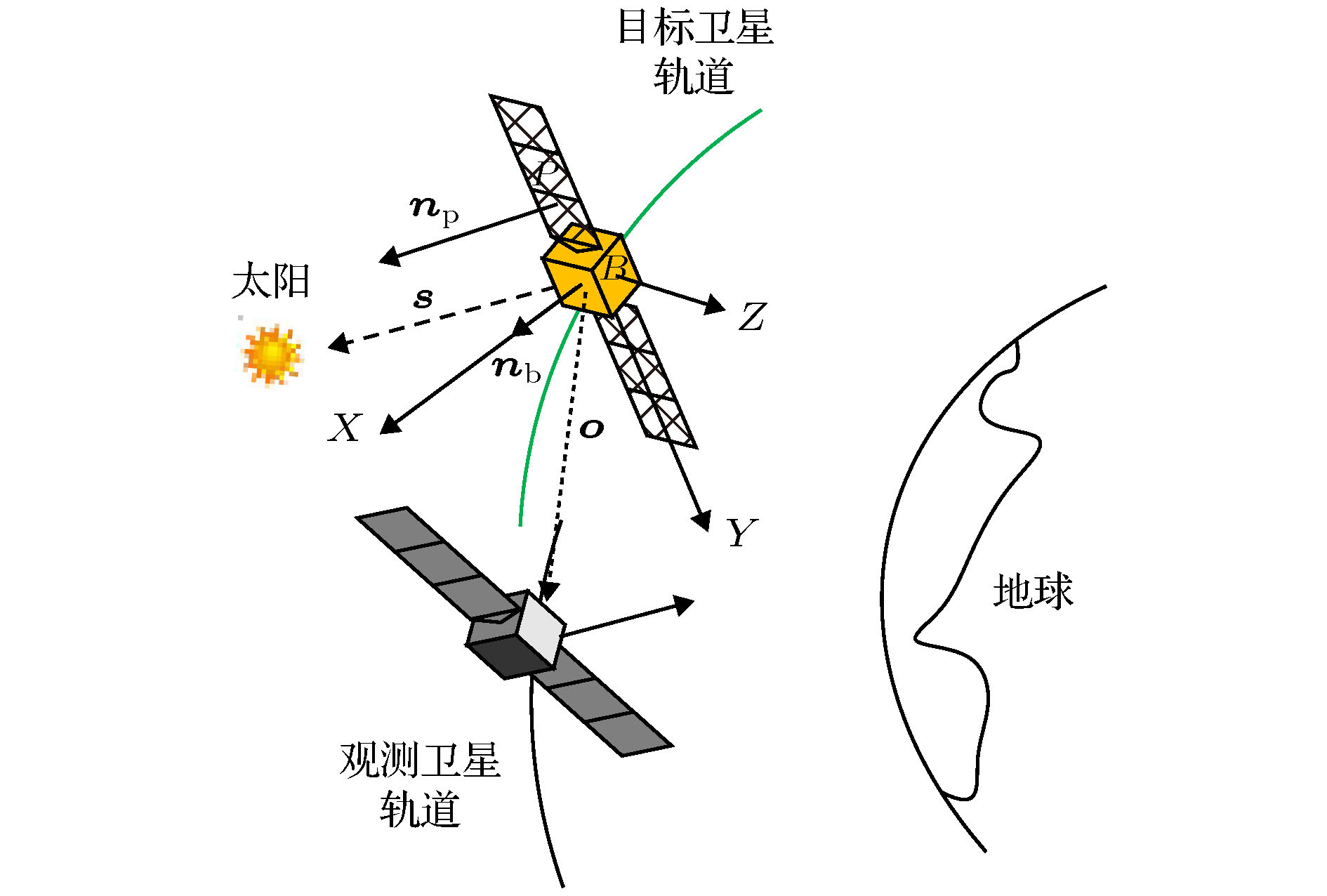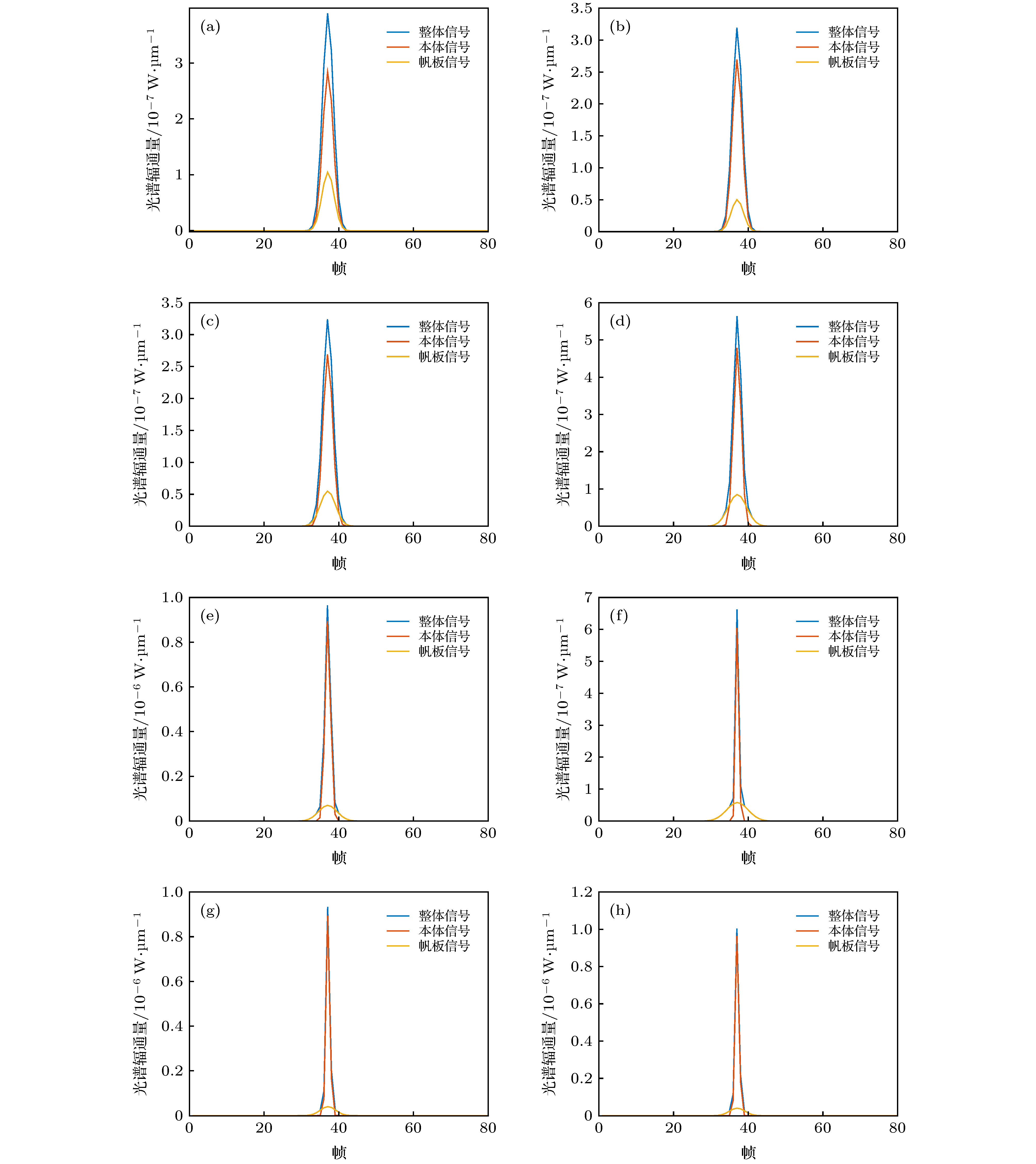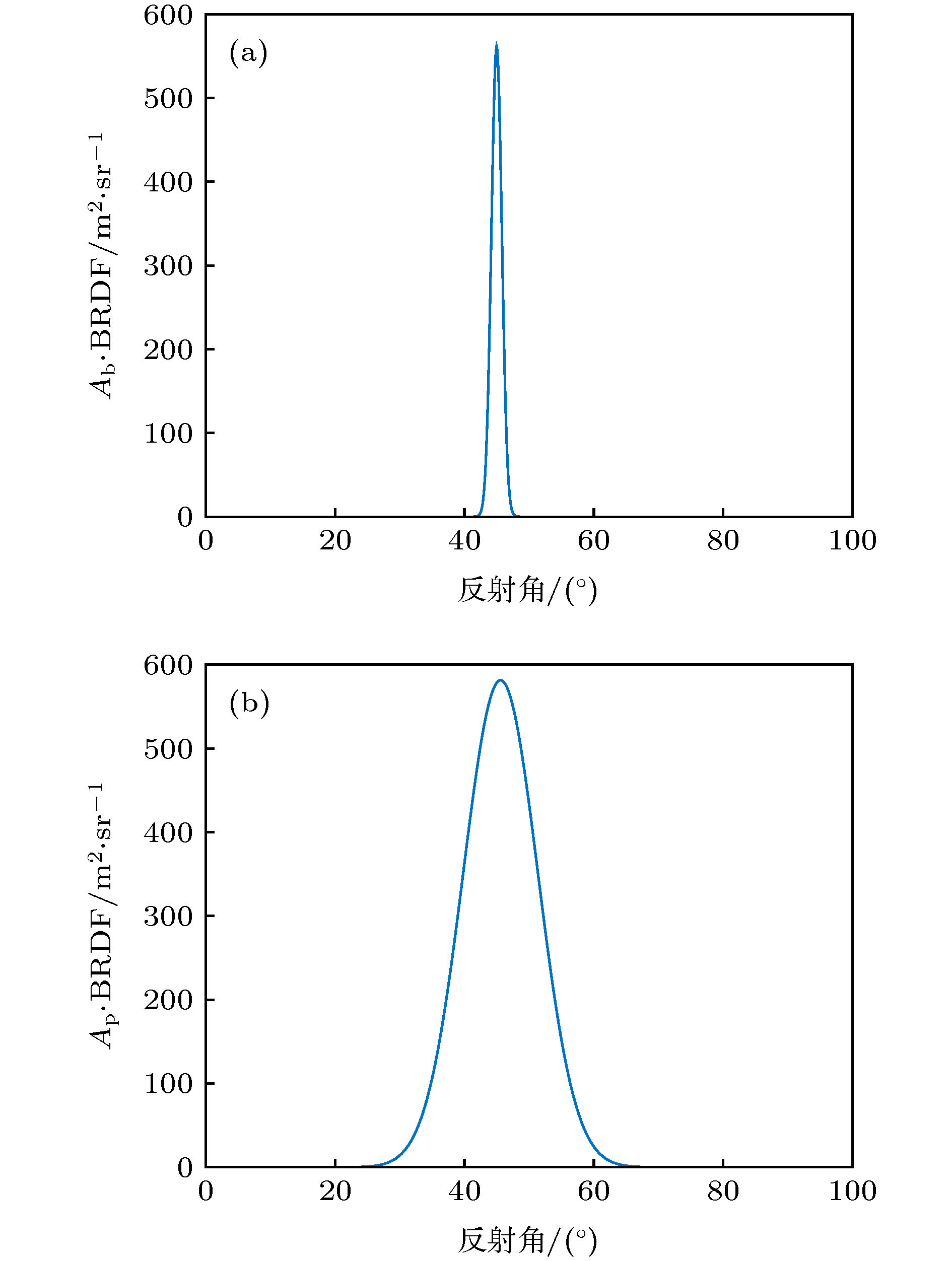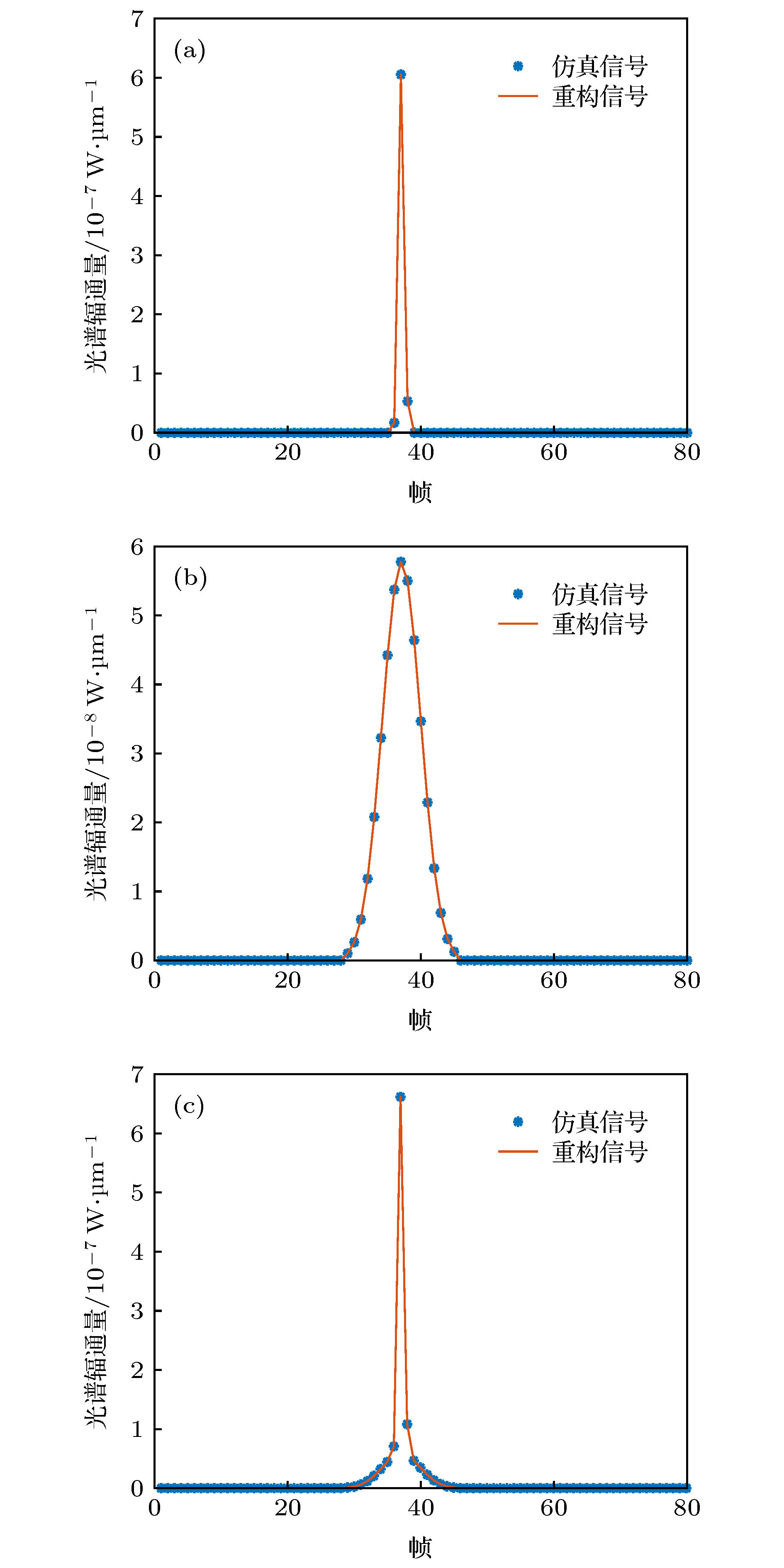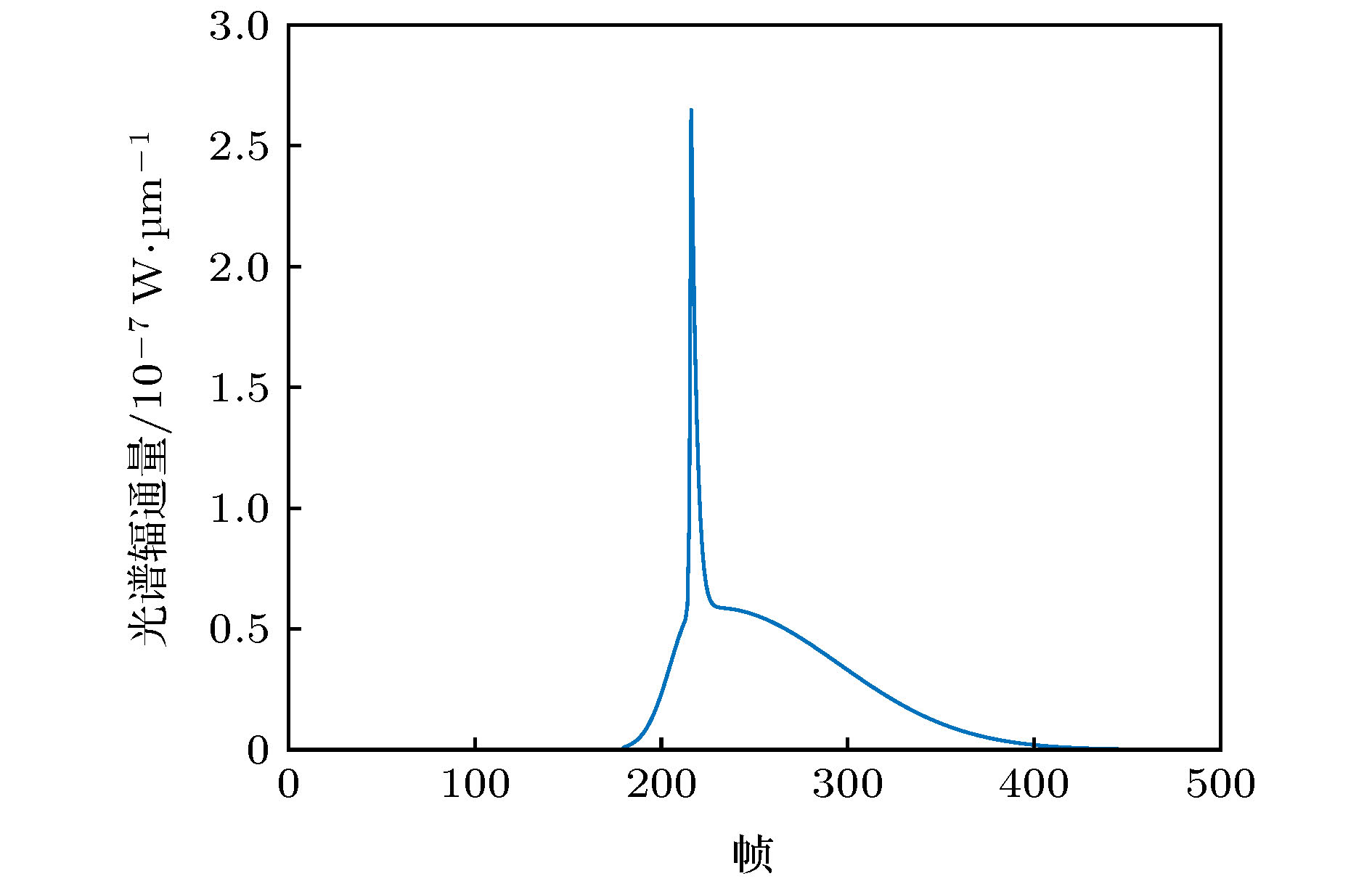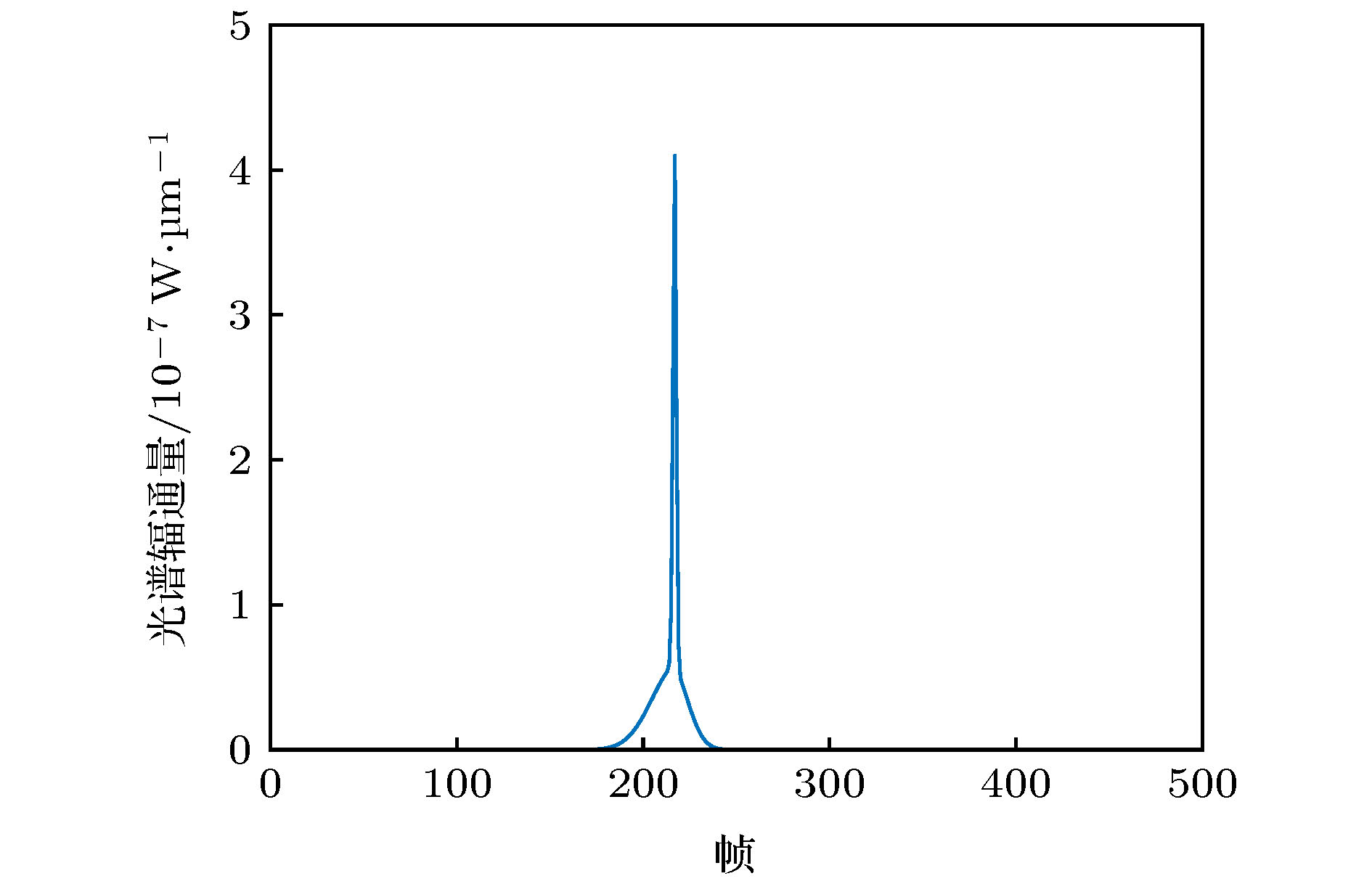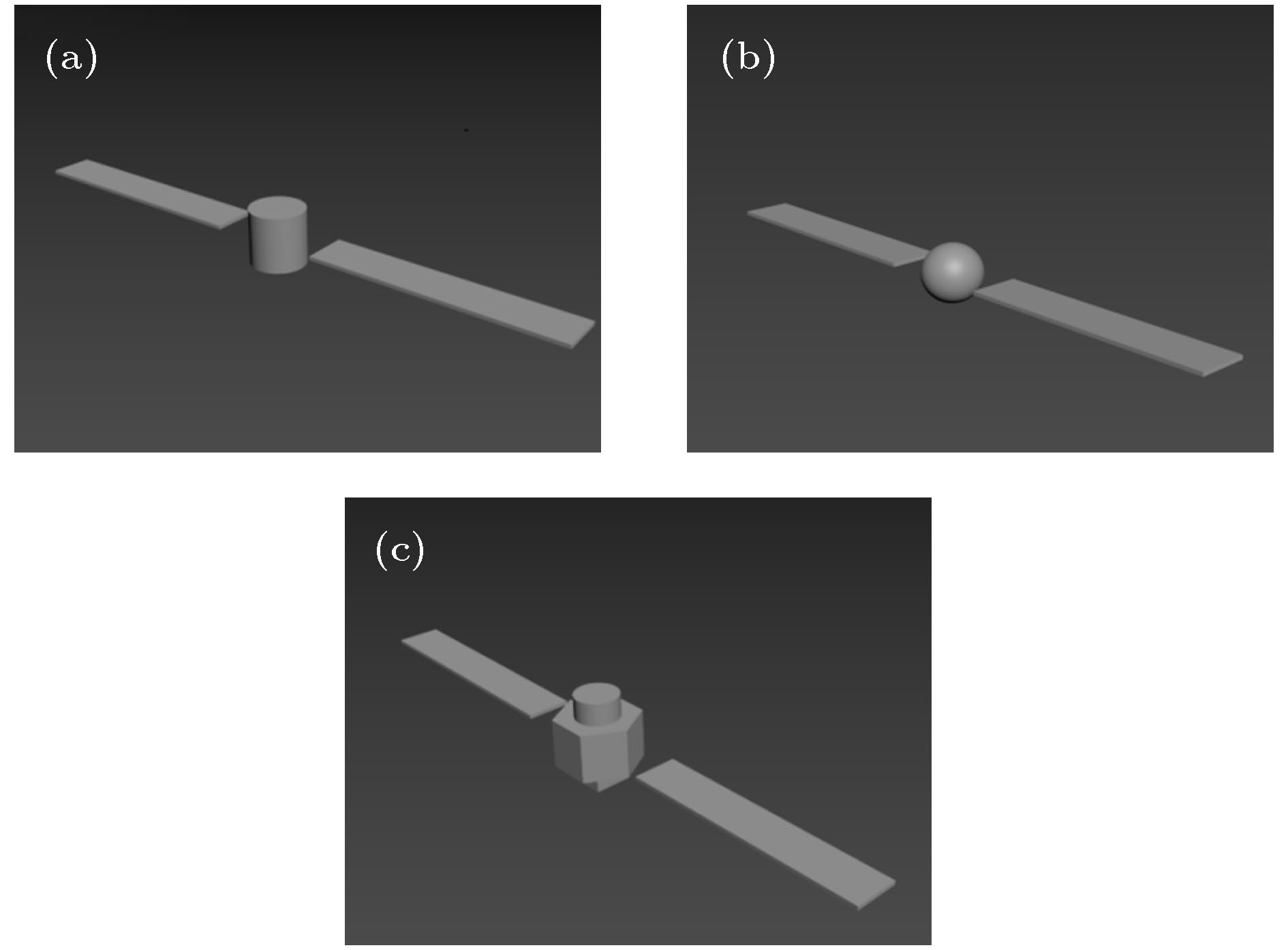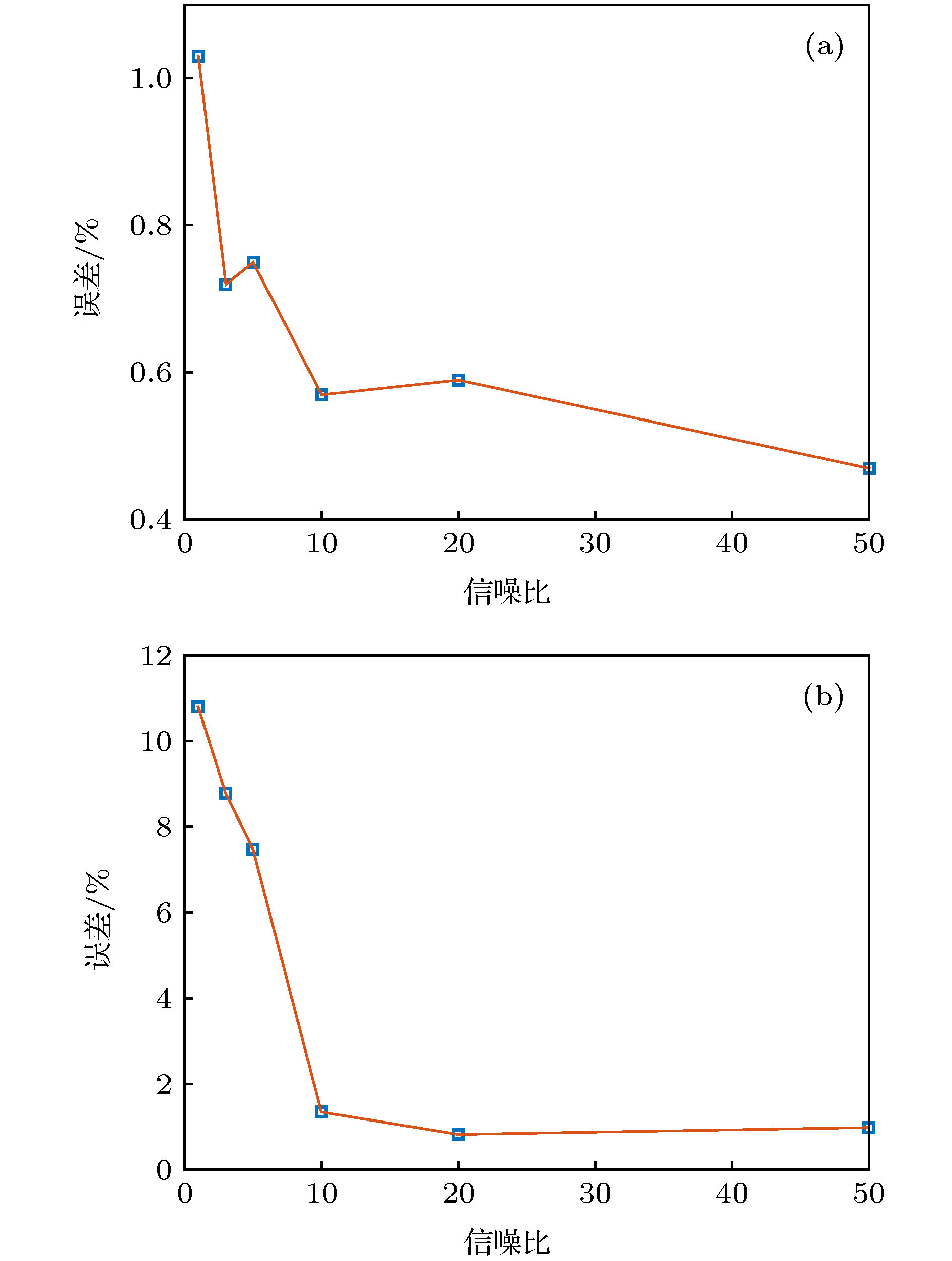-
为了在天基远距离条件下估计空间目标的姿态参数, 提出了基于时序光谱信号分级求解目标表面参数及姿态参数的方法. 第一级, 在三轴稳定状态下将空间目标等效为“双面模型”, 引入双向反射分布函数(bidirectional reflectance distribution function, BRDF)的多级融合模型表征复杂材料的光谱反射特性, 基于时谱信号与时谱信号模型对双面光谱BRDF与面积乘积进行重构. 第二级, 为了抑制双面耦合特性对姿态估计的影响, 构建双面特性分离度, 并基于该度量最大化实现光谱波段优选. 第三级, 构建目标姿态运动状态下的时序光谱信号模型, 以模型值与观测值之间的误差为目标函数, 利用Levenberg-Marquardt算法对姿态参数进行估计. 仿真表明, 该方法更适用于方形本体的目标, 且反演误差会随相位角和探测器噪声的增大而增大, 在信噪比SNR ≥ 10条件下反演误差在2%以内.In order to estimate the attitude parameters of space objects under the condition of space-based long-distance observation, a hierarchical solving method based on the time-series spectral signal is proposed to estimate the parameters of surface reflection characteristics and the attitude of the space objects. The first step is to let the space object in three-axis stabilization state be equivalent to a two-facet model. Then multi-level fusion model of bidirectional reflectance distribution function (BRDF) is introduced to describe the spectral reflection characteristics of complex material surfaces. Based on the time-series spectral signal and its model, the product of area and spectral BRDF of the two-facet can be reconstructed. The second step is to set up the two-facet characteristic difference model to select the optimum wavelength based on the maximum of the difference thereby minimizing the influence of coupling characteristics on of the two-facet on attitude estimate. The third step is to construct the time-series spectral signal model under the change of object attitude. The objective function is defined as the error between the model data and the measured data, then the attitude parameter can be estimated using Levenberg-Marquardt algorithm. The simulation result shows that the method is more suitable for the object with cube body, and the error between inversion value and real value will increase as the phase angle and the detector noise increase. When signal-to-noise ratio is greater than or equal to 10, the inversion error is within 2%.
-
Keywords:
- space object /
- attitude estimate /
- time-series spectral signal /
- visible light /
- bidirectional reflectance distribution function
-
表 1 目标卫星与观测卫星的轨道参数
Table 1. Orbit parameter of object satellite and observe satellite.
卫星 半长轴/km 偏心
率/(°)轨道倾
角/(°)近地点
幅角/(°)升交点
赤经/(°)真近点
角/(°)目标卫星 42378.1 0 0 0 181.803 0 观测卫星 42408.0 0 0 0 184.860 359.93 表 2 观测星探测系统参数
Table 2. Detection system parameter of observe satellite.
参量 光谱宽度/nm 入瞳直径/m 焦距/m 面阵大小 像元尺寸/m 瞬时视场/rad 数值 10 0.1505 0.8 512 × 512 1.5 × 10–5 1.8750 × 10–5 表 3 不同光谱波段的双面特性分离度
Table 3. Two-facet characteristics difference at different wavelengths.
光谱波长/nm $\sigma $ 光谱波长/nm $\sigma $ 400 0.1593 600 0.6664 450 0.3850 650 0.8574 500 0.4576 700 0.8284 550 0.5862 750 0.8031 表 4 650 nm参数重构结果
Table 4. Parameter reconstruction results at 650 nm
序号 本体 帆板 ${A_{\rm{b}}} \cdot {b_j}$ ${\mu _j}$ ${A_{\rm{p}}} \cdot {b_i}$ ${\mu _i}$ 1 0.1722 0.01 0.0003 0.01 2 0.0248 0.02 0.0103 0.02 3 0.0102 0.04 0.0837 0.04 4 0.0517 0.05 0.1046 0.05 5 0.0312 0.07 0.8049 0.07 6 0.0083 0.08 0.1153 0.08 7 0.0137 0.10 0.0489 0.10 8 0.0077 0.20 0.0345 0.20 9 0.0002 0.30 0.0003 0.30 10 0 0.50 0.0103 0.50 表 5 在不同相位角开始估计得到的姿态角速度
Table 5. Estimate results of attitude angular velocity at different phase angles.
开始
相位角/(°)估计得到的姿态
参数/rad·帧–1相对
误差/%3 [0.0125 –0.00182 0.2567] 1.43 5 [–1.35 × 10–4 0.0176 0.2489] 1.76 10 [–0.0163 –0.0034 0.2567] 1.79 15 [–0.0125 0.0223 0.2458] 2.59 20 [–0.0233 –0.0028 0.2742] 3.37 25 [–0.0132 0.0321 0.2533] 3.49 30 [0.0713 –0.0019 0.3057] 9.05 35 [–0.0679 0.1301 –0.1986] 47.25 40 无解 — 表 6 不同模型重构曲线误差
Table 6. Errors of reconstruction curves with different models.
模型 整体信号 本体信号 帆板信号 球体 41.68% 61.24% 26.77% 圆柱体 29.77% 46.73% 23.82% 六棱柱 3.56% 15.09% 1.21% 表 7 不同信噪比下的姿态估计结果
Table 7. Attitude estimate results with different SNR.
信噪比 绕Y轴旋转 绕Z轴旋转 SNR = 1 [8.3448 × 10–7 0.2437 0.0081006] [0.069 0.074087 0.21274] SNR = 3 [4.5801 × 10–7 0.24959 0.0072132] [0.0853 0.003516 0.27007] SNR = 5 [1.9843 × 10–8 0.25191 0.0072818] [0.073 1.1668 × 10–8 0.26576] SNR = 10 [1.2073 × 10–10 0.24933 0.0057039] [0.013255 2.0514 × 10–8 0.25114] SNR = 20 [7.8452 × 10–7 0.25027 0.0059434] [0.007916 4.4372 × 10–6 0.25177] SNR = 50 [8.8736 × 10–8 0.24997 0.0047093] [0.009675 2.0484 × 10–8 0.25056] -
计量
- 文章访问数: 8740
- PDF下载量: 98
- 被引次数: 0















 下载:
下载:
